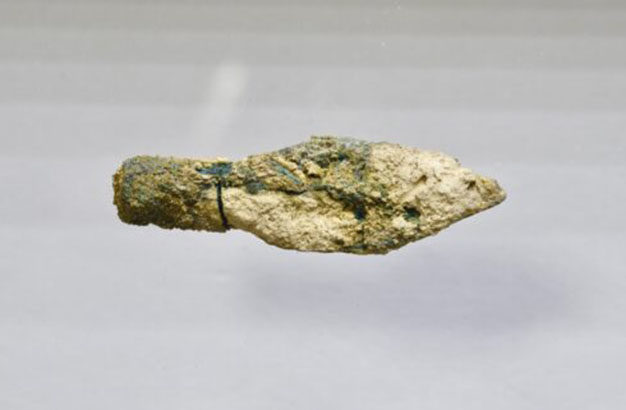
A Scythian arrowhead discovered at the site, which is believed to date from 587-586 BC.Mt Zion Archaeological Expedition/Virginia Withers
Researchers believe they may have discovered proof of the Bible’s account in 2 Kings 25.
The Babylonian conquest of Jerusalem told in 2 Kings details the destruction of the Jewish temple by a Nebuzaradan commander.
2 Kings 25:9 says, “He set fire to the temple of the Lord, the royal palace and all the houses of Jerusalem.”
Now, researchers think that evidence they’ve found may have come from the biblical event, reports the Christian Post.
A team led by the University of North Carolina at Charlotte has uncovered several historical artefacts from the time period on Mount Zion.
Ash layers, arrowheads, lamps, and jewellery have been among the items discovered by archaeologists as part of the Mount Zion Archaeological Project.
Shimon Gibson, UNC Charlotte professor of history, says that ashen layers can mean several things to researchers. “It could be ashy deposits removed from ovens, or it could be localized burning of garbage. However, in this case, the combination of an ashy layer full of artefacts, mixed with arrowheads, and a very special ornament indicates some kind of devastation and destruction.”
The professor states that nobody would have simply abandoned gold jewellery and arrowheads. One earring or tassel found in particular is partly made of gold, something that shows the economic strength of those in the Jerusalem area during that time.
In 2 Kings 25:15 reads: “The commander of the imperial guard took away the censers and sprinkling bowls—all that were made of pure gold or silver.”
The arrowheads discovered by Gibson and his team are Scythian, a type that is known to have been used by warriors from Babylon. Other artefacts, he says, resemble what one would expect to find in a house that had been invaded during a battle.
“Together, this evidence points to the historical conquest of the city by Babylon because the only major destruction we have in Jerusalem for this period is the conquest of 587/586 BCE,” the archaeologist said.
The conquest would have taken place following King Zedekiah’s attack against the king of Babylon, following which the Jewish people were held captive for 70 years.

